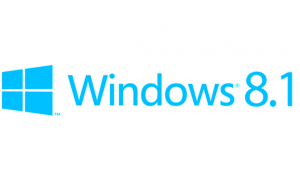Two years after Microsoft ended mainstream support for Windows 7, NetMarketShare reports that almost 50% of desktop computers worldwide still use the popular operating system. With Windows 7 end of support quickly approaching, businesses need to forestall costly security and compliance issues and plan for the future by upgrading to Windows 10.
Microsoft will continue to offer extended support for Windows 7 only until January 14, 2020. This means that Microsoft will provide patches for security threats. However, the company will offer no service packs, no new features, and no fixes for bugs that do not present a security risk. After January 2020, Microsoft will no longer offer security patches.
Windows 7 a Target
Because Windows 7 remains so popular, it presents a desirable target for attackers who focus on well-documented system vulnerabilities. For example, nearly all of the victims of the recent WannaCry attack used Windows 7. During the extended support phase, it is critical that organizations install all security patches to defend against similar attacks.
To start, ensure that your business has installed Service Pack 1. In addition, you will need to stay current with monthly updates. Those updates are available through Windows Update, Windows Server Update Services (WSUS), System Center Configuration Manager (SCCM), and the Microsoft Update Catalog.
Plan Now for Windows 7 End of Support
While upgrading a home computer to a new operating system is relatively simple, business migration to a new platform can be complex. Legacy software and older hardware may not be compatible with Windows 10, for instance. Third-party applications and customized programs may necessitate unique upgrade approaches.
Migrating to Windows 10 will require careful planning and preparation, including preparing users for the changes.
- Check all devices and software applications your organization uses for compatibility with Windows 10.
- Determine a strategy for addressing incompatibility issues. This will involve both time and budget planning, so start now.
- In advance of updating the operating system, make sure employees receive adequate training in new features. This may involve changes to workflow and require adjustments to security and privacy settings.

Even a relatively smooth system upgrade will cause workflow interruptions and generate unexpected complications. With nearly every aspect of your business depends on technology, consider engaging a technology consultant to conduct a compatibility review and guide the migration process.
Additional End of Support Announcements
In addition to Windows 7, Microsoft has announced end of support dates over the next year for other business applications, including:
- Microsoft Office Communications Server 2007 – End of support 1/9/2018
- Microsoft Office for Mac 2011 – End of support 10/10/2017
- Microsoft Office Accounting 2008 – End of support 4/10/2018
 For several other programs (most notably Windows 8.1), Microsoft will end mainstream support in the coming year. To help you plan adequately for all of your Microsoft products, Microsoft provides a searchable Product Lifecycle database.
For several other programs (most notably Windows 8.1), Microsoft will end mainstream support in the coming year. To help you plan adequately for all of your Microsoft products, Microsoft provides a searchable Product Lifecycle database.
Ease the Transition
With award-winning Microsoft expertise, eMazzanti Technologies offers pre-migration assessments, upgrade and migration support and ongoing maintenance. Whether supporting your in-house IT group or managing the entire process, the goal is to ensure business security and productivity.
In addition to operating system migration due to Windows 7 end of support, eMazzanti provides a host of business IT services, including disaster recovery planning, IT security evaluation, capacity planning, software installation and more.







